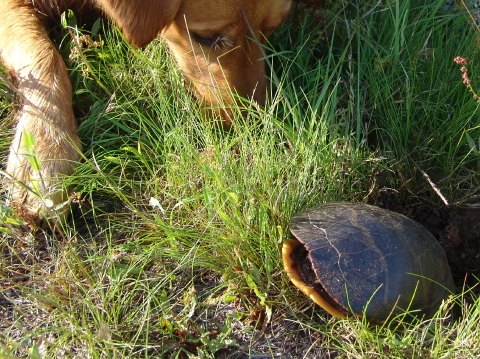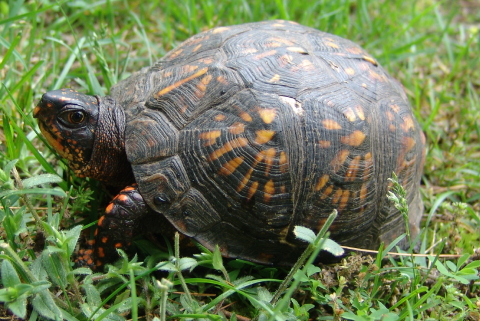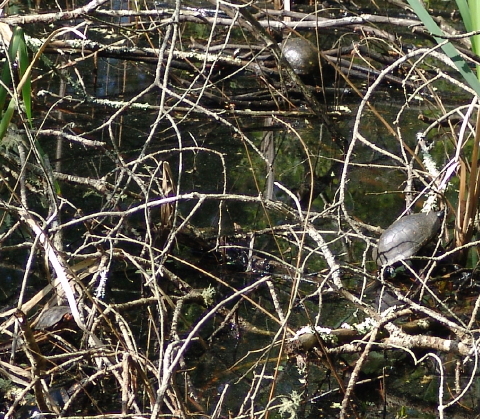Every Turtle Has a Tale:Â Diamondback Terrapin #321
The morning dawned overcast, muggy and wet with intermittent showers. But with a pre-dawn high tide, terrapins could be expected. So, a little after 5 am, Turtle Journal’s Sue Wieber Nourse and Rufus the Turtle Dog headed into the darkness in search of nesting turtles.
Female Diamondback Terrapin #321 @ Aucoot Cove
As the clock ticked toward 6, Sue discovered this beautiful large female on an unsuccessful nesting run at Aucoot Cove. Nearly 20 centimters long and weighing 1343 grams, this terrapin (now #321) had not been previously seen. She still had eggs inside her, but they were fairly high in the oviducts. So, she will have several more opportunities to make a successful nesting run.
Terrapin #316 Nesting @ Hammett’s Cove
At Hammett’s Cove on the other side of the town, Sue and Terrapin #316 surprised each other. This less than optimal nesting site has been dramatically disturbed by human development. Once a dense terrapin nesting site, it offers little hope any more for a viable nest.  Terrapin #316 had crossed the now compacted and gravel pathway, which had previously served as a perfect nesting location, and found a tiny spot of root-filled soil near a pile of rocks protecting the private dock.Â
Terrapin #316 and Her 12 Perfect Eggs
With little hope that these eggs would survive predators or avoid root invasion, Sue excavated twelve perfect terrapin eggs, weighing a total of 91 grams. Each egg averaged between 3.2 and 3.3 centimeters long and weighed about 7.8 grams. We had seen Terrapin #316 nesting at Hammett’s Cove in 2010. Back then, she had laid her first nest on June 9th. Today’s nest is a full ten days early.Â
Helping Hand — Twelve Perfect Diamondback Terrapin Eggs
We gave her eggs a “helping hand.” Her nest has been relocated to a safe “turtle garden” where Terrapin #316’s babies can incubate in safety until they hatch … perhaps as early as the end of July.


















